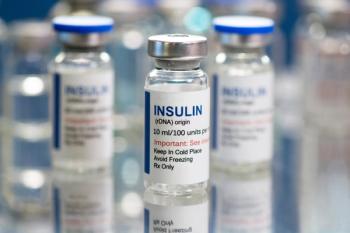
Marijuana Ingredient Shows Promise in Seizure Reduction
Recently released studies on Cannabidiol, used to treat certain types of childhood seizures, are showing promising results.
Jason Poquette, RPh, is a 1993 graduate of the University of Connecticut School of Pharmacy. For most of his career, he has held retail pharmacy management positions. He also spent 7 years working in health plan formulary analysis and research. He currently works for Pharmacy Healthcare Solutions (PHS) as manager of an outpatient hospital pharmacy, developing programs to improve utilization of the pharmacy and transitional care for patients.
While many states across our nation are engaged in political battles over the recreational use of marijuana, researchers have been busy studying the medical benefits of cannabidiol (CBD) for seizures and the results look promising.
Cannabidiol, one of at least 60 cannabinoids contained in the marijuana plant, is a non-psychoactive molecule that has been considered for a variety of potential clinical uses. New studies, recently released at the annual
Epidiolex®, the name given to this concentrated form of CBD being developed by GW Pharmaceuticals, is an exciting breakthrough and offers hope to thousands of potential patients. Traditional treatment for these more rare seizure disorders, generally effecting children from a young age, are often ineffective. But, according to Elizabeth Thiele, MD, PhD, the director of the Pediatric Epilepsy Program at Massachusetts General Hospital, "for many children with treatment-resistant Dravet syndrome, Lennox-Gastaut syndrome and other epilepsies, CBD appears to be effective ... treatment that is safe and well-treated overall."3
As a pharmacist it is especially rewarding to watch the development of a molecule that has been surrounded by the social controversy of marijuana become a life-changing opportunity. Patients and especially parents should be very encouraged by the results. While no medication will be effective for every patient, in one trial twice as many patients (44%) experienced seizure reduction at 14 weeks compared to those in the placebo arm (22%).
Adverse effects, while common, were generally mild and well tolerated. These included symptoms such as drowsiness, decreased appetite, diarrhea, fever, vomiting and upper respiratory infection. More serious treatment-related adverse effects occurred approximately 8.2% of the time in patients compared to a rate of 5.1% for placebo.
GW Pharmaceuticals has earned a reputation in the development of cannabis-related compounds to treat serious conditions. They are the developers of the drug Sativex® (nabiximols) which is used to treat spasticity related to multiple sclerosis and has been approved in 29 countries outside the United States. They initially received an investigational new drug (IND) approval for Epidiolex® from the FDA back in May of 2014.
The results of the recent studies are in line with the optimism expressed a year earlier when preliminary data showed that 47% of patients experienced a more than 50% reduction in seizure frequency. At that time, Orrin Devinsky, MD, of New York University Lagone Medical Center’s Comprehensive Epilepsy Center remarked that “These data reinforce and support the safety we have shared in previous studies. Most importantly it is providing hope to children and their families who have been living with debilitating seizures.”
4
And patients aren’t the only ones who have been helped by Epidiolex® either. Early investors watched as the stock price for GW Pharmaceuticals (GWPH) rose from about $61 in January of 2016 to $111 to close out the year. But the financial rewards of this treatment aren’t certain yet. According to Motley Fool contributor Todd Campbell, Epidiolex® could face competition from medical marijuana dispensaries that can provide high CBD-strain plants for patients. But, he reminds readers, “Medical marijuana treatments are not as vetted and proven scientifically to deliver these kinds of benefits.”
;5
While we don’t have any guesses as to if or when a CBD treatment for these rare and debilitating seizures for children will be widely available as an FDA-approved treatment, expanded access programs are making it easier for physicians to treat some of their patients right now. As a pharmacist, I’m hopeful to see this on our shelves in the near future, and for the sake of all those impacted by seizure disorders, I hope it is soon.
References
1.
Thiele E, Mazurkiewicz-Beldzinska M, Benbadis S, et al. Cannabidiol (CBD) significantly reduces drop seizure frequency in Lennox-Gastaut syndrome: Results of a multi-center, randomized, double-blind, placebo-controlled trial (GWPCARE4). Paper presented at: 2016 American Epilepsy Society Annual Meeting. December 2-6, 2016; Houston, TX. Abstract 1.377.
2.
Cross JH, Devinsky O, Laux L, et al. Cannabidiol (CBD) reduces convulsive seizure frequency in Dravet syndrome: Results of a multi-centered, randomized, controlled study (GWPCARE1). Paper presented at: 2016 American Epilepsy Society Annual Meeting; December 2-6, 2016; Houston, TX. Abstract 2.362.
3. Cannibidiol medicine may help patients with epilepsy who don't benefit from standard medications, research suggests [news release]. Houston. American Epilepsy Society press office. https://www.aesnet.org/about_aes/press_releases/cannabidiol122016. Accessed January 7, 2017.
4. GW Pharmaceuticals Announces New Physician Reports of Epidiolex Treatment Effect in Children and Young Adults with Treatment-Resistant Epilepsy [news release]. London. GW Pharmaceuticals. December 5, 2015. http://dev-gwpharma.pantheonsite.io/about-us/news/gw-pharmaceuticals-announces-new-physician-reports-epidiolex-treatment-effect-children. Accessed January 7, 2017.
5. Motley Fool. Why this Marijuana Stock was a Top Stock So Far in 2016. Motley Fool Staff. November 28, 2016.
Newsletter
Stay informed on drug updates, treatment guidelines, and pharmacy practice trends—subscribe to Pharmacy Times for weekly clinical insights.










































































































































































































